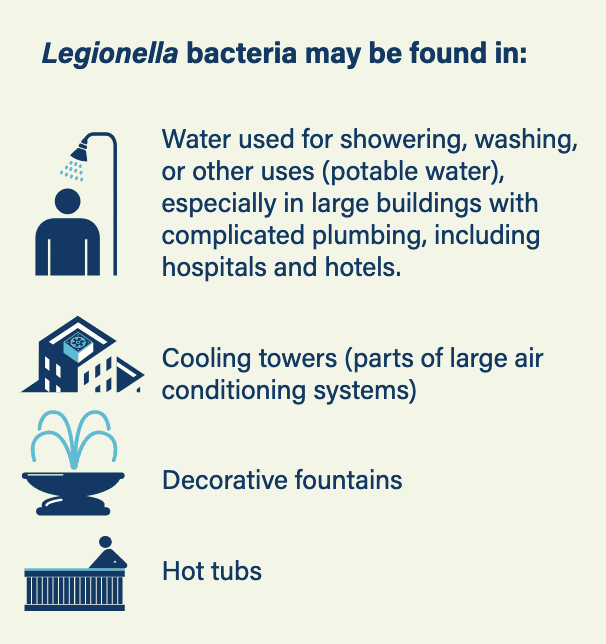Search Posts
Recent Posts
- Rhode Island Legislature Highlights Accomplishments for the 2025 Session June 25, 2025
- Sports in RI: Cody Tow, Volleyball Past, Present and Into His Future – John Cardullo June 25, 2025
- Need a Break? Time for Sour Grapes – Tim Jones June 25, 2025
- Rhode Island Weather Forecast for June 25, 2025 – Jack Donnelly June 25, 2025
- It is what it is: Commentary on 6.25.25 with Jen Brien June 25, 2025
Categories
Subscribe!
Thanks for subscribing! Please check your email for further instructions.

Increase in Legionnaire’s Disease locally. How and where bacteria grows.
The Rhode Island Department of Health (RIDOH) is notifying the public that it has observed an increase in the number of reported cases of Legionnaires’ disease (LD).
Between 2014 and 2020, there was an average of 10 cases during the months of June and July each year, ranging from 0-11 cases in a single month.
From June 2, 2021 to July 26, 2021 there have been 30 cases of Legionnaire’s disease, 29 of which have illness onset dates between June 17 and July 21. Twenty eight of the 30 people have been hospitalized. No common source of exposure has been identified, although an investigation is ongoing.
This is the age breakdown provided to RINewsToday. Data shows over 50% are occurring in those over 60.
| Age Range | Count |
| 20-29 | <5 |
| 30-39 | <5 |
| 40-49 | <5 |
| 50-59 | <5 |
| 60-69 | 6 |
| 70-79 | 9 |
| 80 or older | 5 |
More details on breakdown of cases as provided by RIDOH: 23 of the reported cases are in people who live in Providence County. No reported cases in people who live in Bristol County. Fewer than five reported cases in each of the following counties: Kent County, Newport County, and Washington County. Note: a significant portion of the State’s population lives in Providence County, so to see the majority of these cases there is not unexpected.
“This is another example that underscores the value of RIDOH’s routine monitoring for communicable diseases,” said Director of Health Nicole Alexander-Scott, MD, MPH. “We know that Legionella bacteria grow best in complex water systems that are not well maintained. When this water becomes aerosolized in small droplets, such as in a cooling tower, shower, or decorative fountain, people can accidentally breathe in the contaminated water. This is of particular concern now as some buildings’ water systems have been offline for a prolonged period due to the COVID-19 pandemic and are just now returning to service.”
Symptoms of LD start two to 10 days after breathing in the bacteria, Symptoms can include cough, shortness of breath, fever, muscle aches, and headaches. It is spread from a contaminated water source through the air.
LD cannot spread from person to person.
Anyone who is diagnosed with LD is treated with antibiotics. Most people who get LD need to be admitted to the hospital, but they make a full recovery. However, approximately one in 10 people who get LD will die. If a person with Legionnaire’s disease is diagnosed and starts taking antibiotics early on in their illness, it is less likely they will have serious complications like lung failure or death.
Legionella is especially a concern in buildings that primarily house people older than 65, buildings with multiple housing units and a centralized hot water system (like hotels or high-rise apartment complexes), and buildings higher than 10 stories.

Things Rhode Islanders can do to prevent the spread of LD include:
- If you live in a building that primarily houses people older than 65, a building with multiple housing units and a centralized hot water system (like hotels or high-rise apartment complexes), or a building higher than 10 stories, ask if there is a Legionella Water Management Program in place.
- In homes or other types of buildings, follow the manufacturer’s directions about how to clean and disinfect hot tubs, whirlpools, showerheads, and breathing equipment like CPAP machines, to help stop bacteria from growing.
Additional resources:
